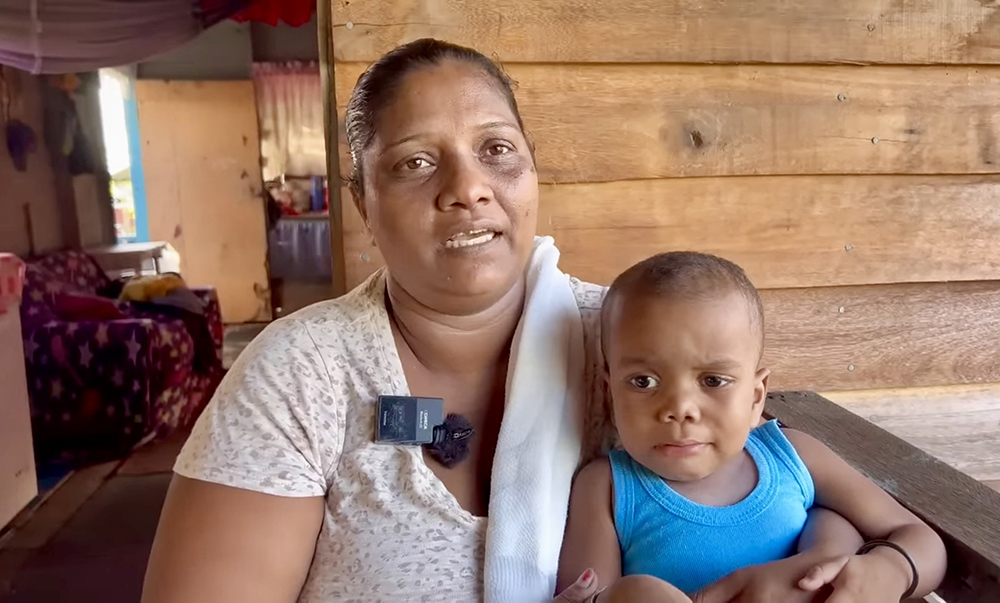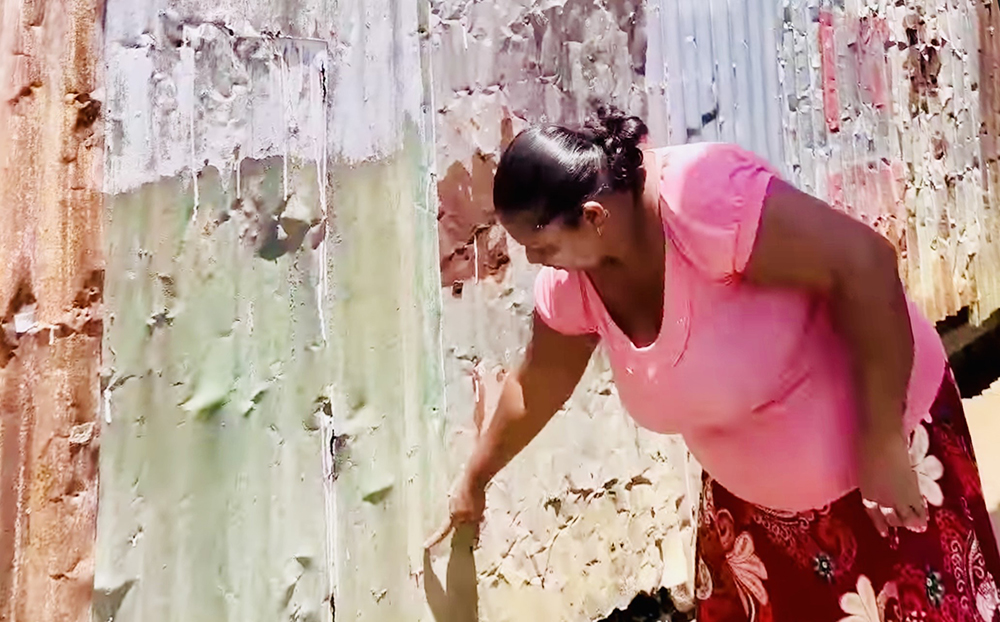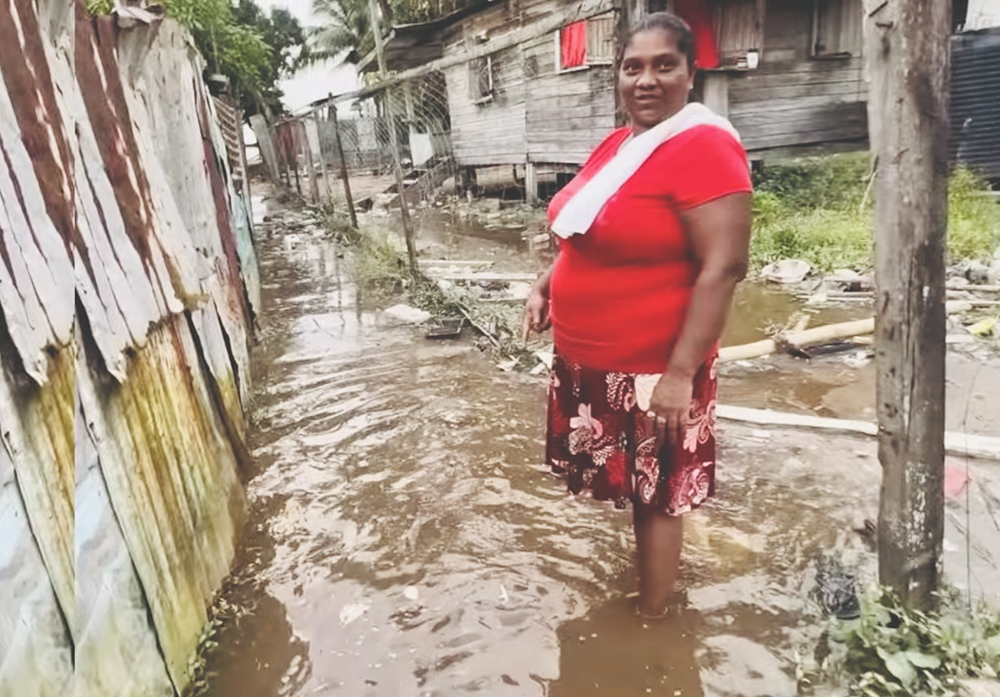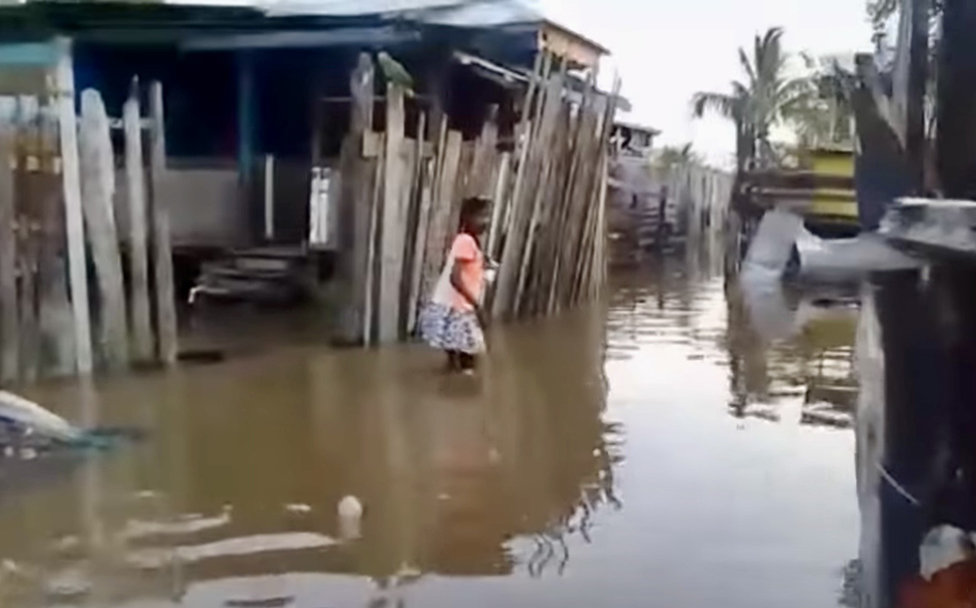By Shabna Rahman
Naomi Ramdehol, a domestic violence survivor, of the Parika Sea Dam, East Bank Essequibo, who is facing a tough life financially, recently lost her son to a brain tumour, so celebrating Christmas is the last thing on her mind.
One-year-old Kevon, was diagnosed in June this year and died in October. She is still mourning his passing and is not in the holiday spirits. Even so, she never really afforded to celebrate too much.
The single mother moved to the sea dam 20 years ago and does not have access to electricity, proper road and potable water. She suffers constant flooding from the spring tide and dreams of relocating to a more comfortable area.
The good news is that she is one step closer to achieving her dreams, as she was allocated a house lot at De Kinderen, West Coast Demerara (WCD). She has already identified the land and is to start clearing it soon.
She was among the first set of people to move to the sea dam, located close to the fisheries and the Parika Stelling. Now there are about 26 families living there.
During the spring tide, residents have to wade through the floodwaters to get in and out of their houses. They are also unable to plant a kitchen garden, while the unhygienic environment would cause the children mostly, to become sick.
The flooding would sometimes result in the toilets overflowing and according to Naomi, “we have to bathe with the same water, we have to wash with the water… When the tide is high, the children would help me to full up the tanks…”
Naomi also has barrels that she fills with water “from the zinc top when the rain fall and I have to save that to drink and cook.”
Despite the hardships they face, Stabroek News was surprised that not many of the residents have applied for house lots to escape the Shantytown lifestyles.
Naomi’s sister, Lalita, whose house almost fell due to the spring tide and had to relocate to a safer spot nearby, was also allocated a lot. Like Naomi, she applied for the lot and waited for many years before it finally became a reality.
Naomi is struggling to save the rest of the money to pay off for the lot and is worried about finding enough to fence the land and to build the house to relocate.
She is determined to move though “because this water keep coming and my house start to lean on one side. I would build a lil shack or something just to come out from this place.”
In October 2022 the Ministry of Housing had called her to pay for her lot during a one-day community event at the Leonora Track & Field ground. But she only had half of the amount and was turned away.
She tried to explain that she had to use it a few months before, to offset funeral expenses for her ex-husband (her older children’s father), but became disheartened because they could not help her.
“They tell me to go to the office in Georgetown and I went there and they still didn’t help me,” Naomi said. Feeling dejected and having to continue dealing with the floodwaters with no place else to go, she highlighted her struggles on a local YouTube channel.
After the video, which showed the dire circumstances of Naomi and some other residents, was aired, she, along with Lalita, decided to go meet Minister of Housing, Collin Croal.
Accompanying them too, was Verama Basdeo, a Guyanese-Venezuelan whose plight had also been featured on the YouTube channel, as well as in this newspaper.
They could not meet the minister, but the staff took their information and promised to contact them. They were happy when they received letters to go to the International Building Expo at the Providence Stadium in August and were among 2000 residents who got their lots.
Brain tumour
In the midst of all of her struggles, Naomi’s son, who was born from a second relationship, was diagnosed with brain tumour in June this year and died in October.
He had to be admitted first at the West Demerara Regional Hospital (WDRH) and then twice at the Georgetown Public Hospital (GPHC).
Sadly, when the child was diagnosed, the tumour was already too big and could not be removed. Naomi had not noticed that he had developed a swelling in his head.
It was only when he suddenly started vomiting and was “getting a fever, mostly in the head,” that she took him to the Leonora Diagnostic Centre. He received treatment, but there was no improvement.
She then took him to the WDRH, where doctors observed that the head was swollen. He was admitted and an X-ray proved that there was “fluid in his head…”
They then transferred him to the GPHC and doctors found out that there was a “mass growing in the head” via a CT-scan.
A surgery was performed to insert a tube to drain the fluid. Sadly, the mass could not be removed because of its size.
After the child was discharged from hospital, Naomi had to take him for weekly follow-up treatments, but his condition still kept worsening. He had stopped moving around and was crying constantly.
Early October, he was again admitted to the hospital and Naomi spent the time there with him, praying and crying for a miracle to happen. When nothing more could be done to help him, the doctors sent him home and he died peacefully a few days later.
Naomi’s two older daughters have moved on with their lives and both have babies of their own. Another daughter, 16 and a son, 15, are still living with her.
She runs a small shop and rears white chickens, which she would “pluck and sell” but during the child’s sickness and his hospitalisation, she suffered losses with both businesses.
Abuse
Naomi had her fair share of domestic abuse at the hands of her late ex-husband. She recounted that she “went through hell with him.” She only mustered the courage to leave him when her 15-year-old son was a baby.
“When he drunk he would brutalise me bad and I was afraid of him. I never used to fight back because he threatened to chop off my head. I used to go to the neighbours’ house and hide and when he sleep away, I would go home back. One time he run me to beat me and I fall on an iron and nearly dig out my whole eye,” she recalled sadly.
He worked as a labourer for a small income but yet he would find money for alcohol. “When he get the money, I doan even see a $20. I used to go and beg the neighbours for lil food…”
Life was a struggle financially and when they could not afford to pay the rent and the light and water bills, they were forced to move.
“A friend tell we about this place (sea dam) and that’s how we end up squatting here. First we build a house close to the water edge but that fall down,” she pointed out. By then she was already separated from her husband.
The present spot they live on was actually “a hole. My two big daughters helped me to fill it up and I build back a small house…” Naomi had to find a way to earn so she can support her family.
She started “to sell plantain chips on the road because me couldn’t go far and work and leave my children.
The children would go to the stelling and pick up loose plantains [left back by farmers when they bring out produce from the islands].
“I would make chips and sell it on the road. When the children come home from school they would help me to sell too.” She used the proceeds from the sale to renovate the house and make it more convenient for her and the children.
A few years after separating from her husband, she met someone else and bore the last child who died, from that union.
It didn’t take long for him to show her his true colours though. He too started to consume alcohol constantly and abuse her so she ended that relationship as well.
She tries hard to be independent and her wish for the New Year is for her business to thrive so she can move out of the sea dam and be happy with her family.





